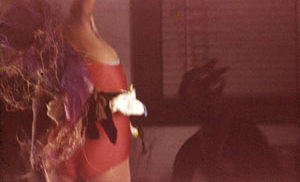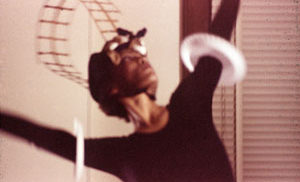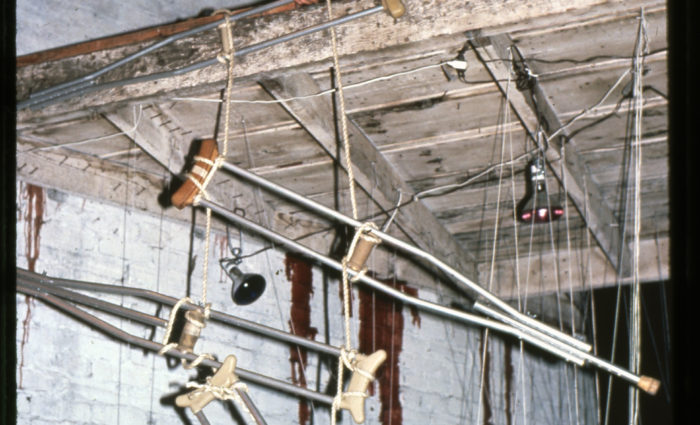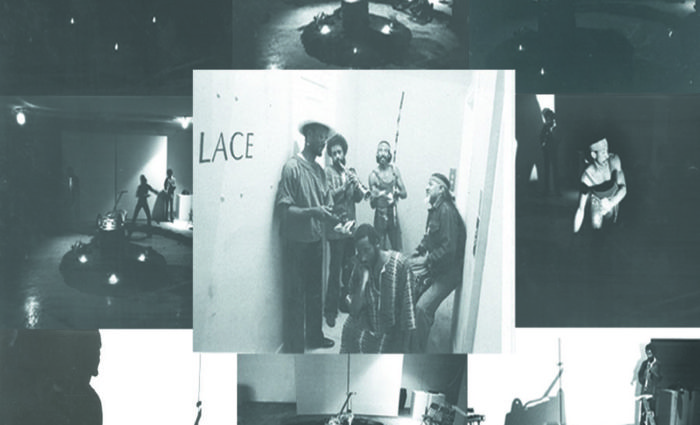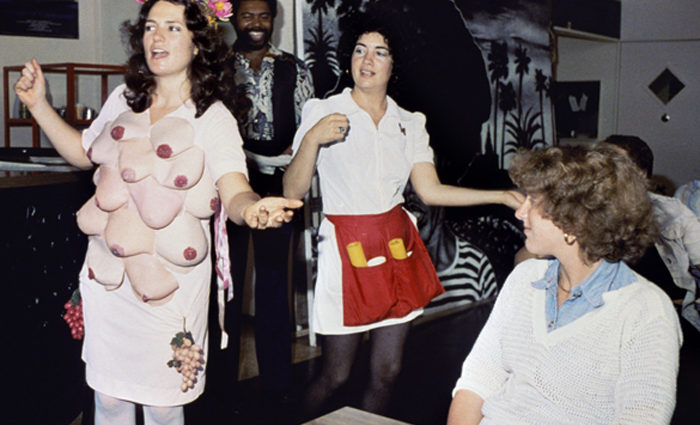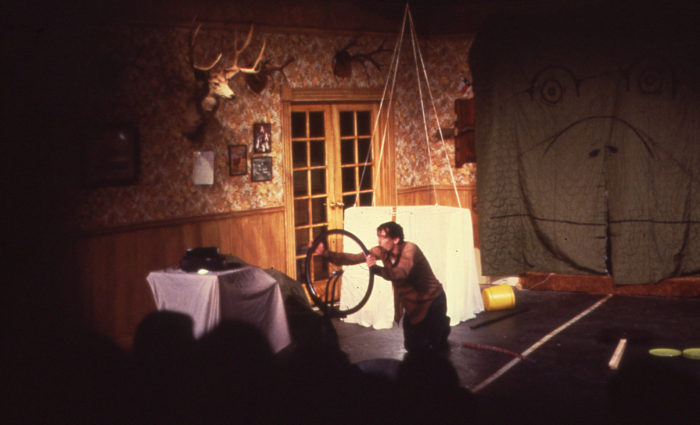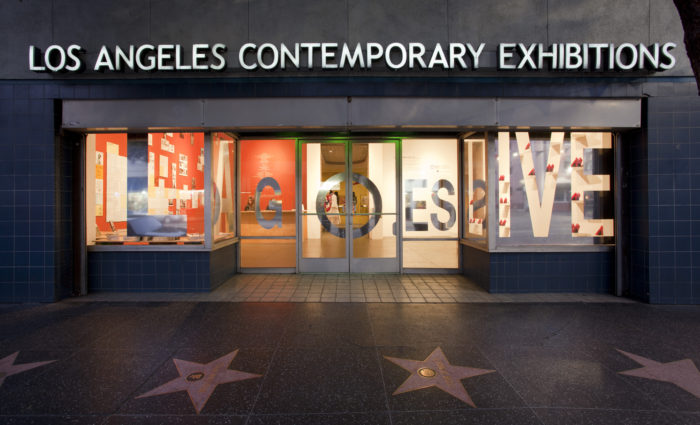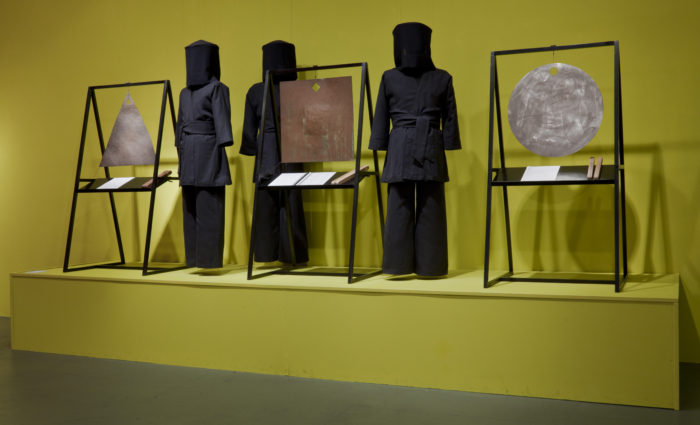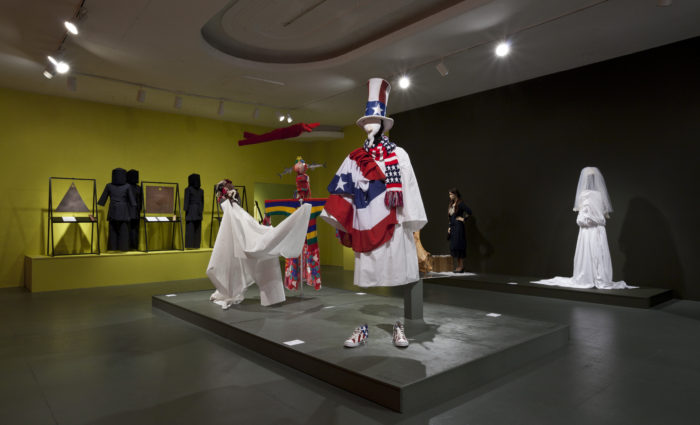Los Angeles Goes Live: Performance Art in Southern California 1970-1983
September 27, 2011 – January 29, 2012
Opening Reception – 27 September 2011, 8-10PM
“Performance’s potency comes from its temporariness, its ‘one time only’ life.” –Peggy Phelan
Los Angeles Goes Live is an exhibition, performance series and publication project that explores the histories and legacies of performance art in Southern California in the 1970s and early 80s. It will include a broad range of materials that represent the varied material record of performance: from photographic and video documentation to scores, scripts, costumes, posters and artist books. The Los Angeles Goes Live performance series will feature re-inventions of historical performances and new performative actions staged throughout the city.
Los Angeles Goes Live is part of Pacific Standard Time. This unprecedented collaboration, initiated by the Getty, brings together more than sixty cultural institutions from across Southern California for six months beginning October 2011 to tell the story of the birth of the L.A. art scene. LACE’s exhibition, performances and publication are supported by a generous grant from the Getty Foundation.
LACE invites its audiences to interrogate a central issue at the core of performance art practice and scholarship:
How can one revisit performance art after the fact? Through documentation? Through restaging the work by the original artist? Through a contemporary reinvention by another?
EXHIBITION
The exhibition will feature performance art documentation and ephemera that has gone unseen for generations and will feature a range of artists and approaches to performance. Artist and guest curator Ellina Kevorkian has organized Recollecting Performance. This collection of clothing and objects suggests that the clothing or objects used in a performance are not remnants but a sculptural void holding an inherent performance to be fulfilled. Building upon the dominant history created by the actions of Eleanor Antin, Chris Burden, Suzanne Lacy, Allan Kaprow, Mike Kelley, Paul McCarthy, and Barbara T. Smith, the exhibition features artists and collectives that were also pushing the boundaries of convention and shaping the broader creative community with their work such as Jerri Allyn, Asco, Bob & Bob, Dorit Cypis, Dreva, Gronk, Ulysses Jenkins, Kim Jones, the Kipper Kids, Richard Newton and Johanna Went, to name just a few. Join us for a grand opening reception on Tuesday, 27 September 2011, 8-10PM.
PERFORMANCE SERIES
LACE is commissioning re-stagings and re-inventions of historic performances in Los Angeles from the 1970’s. The series will serve as a platform to spark dialog and creative actions that span the generations of Los Angeles’ performance art history. Commissioned artists include: Ulysses Jenkins, Cheri Gaulke, Jerri Allyn, Liz Glynn, Cassils, Dorian Wood, Denise Uyehara, James Luna and the OJO collective. LACE is also working with Suzanne Lacy to produce Three Weeks in January. Lacy will re-stage her seminal interventionist art project entitled Three Weeks in May, a political art performance that took place in Los Angeles in May 1977 and sponsored by Studio Watts Workshop, The Woman’s Building and The City of Los Angeles.
PUBLICATION
LACE’s Los Angeles Goes Live publication, published by Routledge, features scholarly essays by Peggy Phelan, Amelia Jones, and Michael Ned Holte and a piece by Suzanne Lacy and Jennifer Flores Sternad that connects the personal reflections of 50 artists working in performance art and public practices in Southern California during the 70’s and early 80’s.
COMMISSIONED ARTISTS
Jerri Allyn and Inez Bush
Jerri Allyn and Inez Bush’s commission uses the Model United Nations paradigm as a performance score. During this interactive daylong event, artists and interested participants will choose an issue about performance art today from the issues listed below, join a team and debate their point of view for an audience. Through a structure of debate, caucus and creative collaboration, participants are provided with an outlet to create and express their respective points of view on important issues in performance art today.
About the artists:
Jerri Allyn, Debating Through the Arts: Performance Art co-creator is an Artist, Educator and Scholar with an MA in Feminist / Art and Community. A founding member of The Waitresses and Sisters of Survival, collaborative performance art groups, she has exhibited internationally and received a Rockefeller Foundation Residency in Italy; an International Lila Wallace Fellowship in Mexico; and National Endowment for the Arts grants, among others. Allyn was Director of Education and Public Programs at the Bronx Museum of the Arts in NY; founding Director of ACT: Artists, Community and Teaching at Otis College of Art and Design in LA, CA; and is currently Director of Programs at Venice Arts, CA.
Inez S. Bush, Debating Through the Arts: Performance Art co-creator is co-founder, CEO and Creative Director of Gramercy Partners, an award-winning marketing communications firm. Bush is a strategist, facilitator and consultant to the non-profit, business and education sectors. She teaches at Otis College of Art and Design and is currently coordinating the Otis K-12 Teacher Retreat on Media Arts, a Professional Development program. She is currently working with Otis College of Art and Design and Los Angeles County Office of Education (LACOE). She holds an M.A. in Education, Leadership and Change from Antioch University LA, CA and BFA in Graphic Design from SUNY Purchase, NY.
Cassils
Cuts: A Traditional Sculpture is a durational performance resulting in an installation, two-channel video, and zine. The work is structured as a dialogue with two seminal performance works, Eleanor Antin’s Carving: A Traditional Sculpture and Lynda Benglis’ 1974 Advertisement. Rather than crash diet, over five months Cassils built their body by taking male hormones, adhering to a strict bodybuilding regime and controlled diet. They documented her body as it changed, taking 4 photos a day, from 4 vantage points inspired by Antin’s photographic grid. They then collapsed 23 weeks of training into 23 seconds of time-lapsed video juxtaposed against highly stylized scenes which play in painful slow motion Cassils’ training process. Finally, with their body in its peak condition they staged a photographic homage to Benglis, placing these two important works in dialogue with each other via their exaggerated physique. More on Cassils at cassils.net
About the artist:
Cassils’ practice weds their experience as a stunt person and a body builder to the ethos of FLUXUS and guerrilla theater. Their solo physical performances are informed by a decade of working in the collective Toxic Titties, but are grounded in the exploration of the specific possibilities of the body, as both instrument and image. Cassils’ methods are multidisciplinary, combining performance, film, drawing, video, photography, and event planning. Cassils has exhibited at the Whitechapel and Thomas Danes in London; Manifesta, Schnitt Ausstellungsraum, and Edith Ruß Site for Media Art in Germany; the LGBT film festival in Paris, France; the Museum Moderner Kunst Stiftung Ludwig in Vienna, Austria; MUCA Roma and International Festival in Rome; Ex-Teresa Arte Actual in Mexico City; Art in General in New York; Art Basel Miami Beach; Yerba Buena Center for the Arts in San Francisco; and LACE and the USC Center for Feminist Research in Los Angeles.
Cheri Gaulke
Peep Totter Fly is a new interactive video installation and performance that revisits the artist’s 1970-80s critique of high heels. The installation will include an evocative video of high heels juxtaposed within natural environments. Viewers will have an opportunity to try on red high-heeled shoes for every size. The gallery installation will “kick-off” with a performance during the opening reception on the streets of Hollywood on Tuesday, 27 September at 8:30PM, starting at LACE. cherigaulke.com
About the artist:
In 1975, Cheri Gaulke moved to Los Angeles to be involved with the Feminist Studio Workshop at the Woman’s Building. There she embraced the notion that feminist art could raise consciousness, invite dialogue, and transform culture. She worked primarily in performance art from 1974 to 1992, addressing themes such as religion, sexual identity, and the environment. Though Gaulke has moved away from performance, the feminist art strategies that she helped to innovate in the 1970s in Southern California continue in her work. Her art continues to be a vehicle for social commentary and a way to tell the stories of individuals and groups under-represented in society. She works in a variety of media, but mostly video, installation, artist’s books, and public art. Gaulke has an MA degree in Feminist Art/Education from Goddard College. She has presented her work at the Museum of Modern Art (NY), the Museum of Contemporary Art (LA), in a Smithsonian-touring exhibition, and in settings all over the world including buses, churches, and prehistoric temples.
Liz Glynn
Spirit Resurrected is a platform and performance structure that brings invites artists to recreate Public Spirit / Live Art LA, a performance festival of live art that took place October 1–31, 1980. The basis of the project is a web-based platform that will 1) serve as an archive for historical documents from and about Public Spirit to give people access to this history and 2) serve as an organizing tool and catalyst for the recreations of the original performances by serving as a space for people to meet up and make practical connections.
About the artist:
Liz Glynn’s practice is fundamentally interdisciplinary, drawing on the legacy of collaboration and experimentation from the Bauhaus and Black Mountain College to Fluxus and Allan Kaprow’s “Happenings.” Using historical narrative or iconic imagery as a structure, Glynn creates situations—not unlike Kaprow’s scores—and allows the meaning of the work to emerge through the interactions of the participants. In 65 | 77 | 03 | -, a two-night performance based on the New York City blackouts, participants shared a candle-lit Italian dinner while “locked in” for an evening emblematic of the Cold War neighborly spirit of 1965, followed by a night of intermittent looting of the restaurant set after the socio-economic upheaval of 1977. The event retained the falsity of a performance, yet constructed its own reality through shared experience. Glynn’s work has been shown in Los Angeles at the Los Angeles County Museum of Art, Machine Project, and REDCAT, and in New York at John Connelly Presents. She was also included in the 2009 group show, The Generational: Younger than Jesus (The New Museum, New York). Glynn received her MFA from California Institute of the Arts.
Ulysses Jenkins
Ulysses Jenkins’ multi-media performance ritual utilizing video projections, dance, music and spoken word is a reinvention of Columbus Day: a doggerel, which was originally performed at LACE in 1980. In this re-staging, Jenkins will collaborate with artists Anna B. Scott, Michael Delgado, Najete Agindotan, Matthew Thomas, David Strother Lena Hovanes and Babalade Olamina to continue measuring the toll placed upon the environment and indigenous peoples.
About the artist:
A longtime artistic presence in the Los Angeles area, Ulysses Jenkins has combined mural painting, performance art, video production, and music to present his stories and ideas to people of all backgrounds. His multifaceted accomplishments have made him a nationally respected figure. From his early verité work with the Video Venice Collective in the 1970s, through his current investigation of the media’s portrayal of African American men, Jenkins has consistently interrogated questions of race, history and the power of the state. In works that explore issues such as the African diaspora and racism in the media, Jenkins provides important insights into the political and cultural realities of African American communities in the United States. He received National Endowment for the Arts Individual Artist Fellowships for Video Art in 1980,1982, and 1995, and was inducted into the Black Filmmaker’s Hall of Fame in 1990. Jenkins received his MFA in Intermedia -Video/Performance Art from Otis College of Art in1979. He currently is an Associate Professor of Studio Art at the University of California, Irvine; he is also an affiliate professor with the African-American Studies program.
Ellina Kevorkian
Recollecting Performance includes garments from the collections of performance artists from the 70s and early 80s whose work explored race, gender, and politics. The garments range from boyscout uniforms worn by the Kipper Kids and a dress worn by Eleanor Antin’s famed ballerina persona, Eleanora Antinova. These garments are sculptural notations by the artists, recording identity issues of the time in performance art, and that forever changed thinking about the role of the body in art.
Curated by Ellina Kevorkian, the exhibition features garments worn by artists such as Eleanor Antin, Jacki Apple, Ed Bereal, Bob and Bob, Nancy Buchanan, Kim Jones, The Kipper Kids, Hirokazu Kosaka, Suzanne Lacy, Paul McCarthy, Senga Nengudi, Richard Newton, Sisters of Survival, Barbara T. Smith, Johanna Went, John White and Robert Wilhite.
About the artist:
Ellina Kevorkian is a multi-disciplinary artist working and living in Los Angeles. She’s had solo exhibitions at Mark Moore Gallery and Western Project. Recent group exhibitions include the Southern California Council of the National Museum of Women in the Arts sponsored retrospective Multiple Vantage Points: Southern California Women Artists, 1980-2006, Girly Show: Pin-ups, Zines & the So-Called Third Wave, and Separation Anxiety. Currently, her project Recollecting Performance is commissioned and to be presented by Los Angeles Contemporary Exhibitions for Los Angeles Goes Live: Performance Art in Southern California 1970-1983 as part of Pacific Standard Time: Art in LA 1945-1980, an initiative of the Getty. Her work has been written about in The LA Times, ArtForum, ArtPulse and Artnet. She received her MFA from Claremont Graduate University and is presently enrolled at the Institute of Curatorial Practice in Performance at Wesleyan University.
Suzanne Lacy
For the project Three Weeks in January, Lacy will re-stage her seminal interventionist art project entitled Three Weeks in May, a political art performance that took place in Los Angeles in May 1977 and sponsored by Studio Watts Workshop, The Woman’s Building and The City of Los Angeles.
About the artist:
Lacy’s work includes installations, video, and large-scale performances on social themes. Her recent work includes The Tattooed Skeleton for the Museo Nacional Centro Reina Sofia in Madrid that focuses on domestic murder of over sixty women each year in Spain, a performance of Prostitution Notes, exposing realities of prostitution in 1974, at the Serpentine Gallery in London, and Anyang Women’s Agenda in Korea, where diverse subjects, including violence against immigrant women, presented in performance to the mayor and city council. One of her best-known works to date is The Crystal Quilt (Minneapolis, 1987) a performance with 430 older women, broadcast live on Public Television. During the nineties she worked with teams of artists and youth to create an ambitious series of performances, workshops, and installations on youth and public policy, documented by videos, local and national news broadcasts, and an NBC program.
Also known for her writing, Lacy edited the influential Mapping the Terrain: New Genre Public Art, published in 1995 by Bay Press and has recently released Leaving Art: Writings on Performance, Politics, and Publics, 1974-2007 by Duke University Press. She has published over 60 articles on public art. Suzanne Lacy: Spaces Between is a monograph by Sharon Irish, published by University Minnesota Press. Lacy’s work has been funded through numerous foundations, including the National Endowment for the Arts and The Guggenheim, Rockefeller, Surdna, Nathan Cummings, Durfee Foundation, and California Community Foundations.
Lacy has had a prolific career in higher education as a founding faculty member of California State University at Monterey Bay. From 1987-97 she was Dean of the School of Fine Arts at the California College of Arts, and in 1998 she became Founding Director of the Center for Art and Public Life. In 1996-7 she co-founded the Visual and Public Art Institute at California State University at Monterey Bay with artist Judith Baca. Active in Oakland cultural politics, Lacy was a member of Mayor Jerry Brown’s education cabinet and an Arts Commissioner for the City of Oakland.
OJO
Cave-Out (In Three Parts, All At Once) will begin as a media intervention in X-TRA magazine and telephone performance designed to encourage public participation, a collaborative performance and soundtrack for Los Angeles. OJO partnered with 323 Projects to provide the phone number (323) 776-4448 that participants will call and leave their message as a performance by following the instructions found in the magazine. The recordings will be compiled and released as a 45rpm single. Finally, OJO will perform at LACE along with the audience in January 2012.
About the collective:
OJO is a collaborative art and music group that consists of Joshua Aster, Chris Avitabile, Justin Cole, Moises Medina, Eamon Ore-Giron, Brenna Youngblood and various audiences. OJO performs experimental music that delves into transcendental rhythms and communal harmonics. One major aspect of OJO’s events aims to remove the barrier between the audience and the performers, so that when one enters the show’s environment they instantly become a member of the “band.” The way this is achieved is by constructing compositions that involve simple music making gestures such as clapping, whistling, chanting, etc. and arranging these elements in a way that creates a texture of communal sound. The audience is coaxed into participating by direct contact with the “performers (OJO).” OJO has created projects for many venues, including MOCA, LAXART, and LACMA in Los Angeles and Queens Nails Annex in San Francisco. The group has also been profiled in ANP Quarterly and LA Confidential.
Denise Uyehara and James Luna
Transitions: Survival Skills in a Suburban Landscape. James Luna and Denise Uyehara will revisit Transitions, one of Luna’s performances from the 70’s in which he unpacked a burlap bag full of “Indian” objects and created new rituals with them. The two artists, both born and raised in Orange County, will conduct a series of rituals that recount surviving life behind the “Orange Curtain,” incorporating a call-and-response, video, music, and hundreds of bones.
About the artists:
Denise Uyehara is an internationally presented performance artist, writer and playwright based in Tucson, Arizona. For over two decades she has investigated memory and what marks the body as it travels across borders of identity by combining narrative, action, found objects, clay animation and video projections on the moving body. She was also a founding member of the Sacred Naked Nature Girls, an experimental, culturally diverse performance collective. A recent recipient of the MAP Fund and the National Performance Network Creation Fund, Uyehara is a pioneering artist whose work the Los Angeles Times hails as “mastery [that] amounts to a coup de theater.” Her recent diptych, Archipelago and the Senkotsu (Mis)Translation Project,re-examine the U.S. occupation in Okinawa, through Native American and Okinawan origin myths and ritual. She holds a B.A. in Comparative Literature from the University of California, Irvine, and an M.F.A. from the Department of World Arts & Cultures from UCLA.
James Luna is a Pooyukitchum/Luiseno Indian and is an enrolled member of the La Jolla Indian Reservation in North County, California, where he currently resides. As a “Rez” resident, he draws from personal experiences and probes emotions surrounding the way people are perceived within and outside of their cultures. An award-winning artist, Luna represented the National Museum of the American Indian in the Venice Biennale in 2005. Luna believes that installation and performance art – in which he employs such media as made and found objects, audio, video and photography – offer an opportunity for Native artists to express themselves without compromise in the Native traditional forms. Luna’s art education at UC Irvine (BFA ’76) included instruction by major California minimal artists. This, coupled with his Masters in Education at San Diego State University (’83), became the foundation of his thirty years of art making in multimedia installation and performance.
Dorian Wood
Athco, Or The Renaissance of Faggot Tree sets out to both explicate and re-interpret the historical trajectories and connections made by, and involving, the East L.A.-based Asco collective, cross-dressing performance artist Cyclona, artist Ron Athey, musician Rozz Williams and the underground club performance scene of the early 80’s. This installation/performance consists of 200 people, each representing crucial figures in the history of Los Angeles performance art from the late 70’s to early 80’s. This project will take place outdoors in a Los Angeles park in October 2011.
About the artist:
Los Angeles-based artist Dorian Wood is “armed with a vocal charisma that would befit a preacher and an experimental streak that would make avant-gardists swoon” (WNYC Culture). She has held audiences captive for years on street corners, in concert halls and performance spaces throughout the US, Mexico and Europe, both as a solo performer and as a member of the 30-piece experimental orchestra, Killsonic. Recently, Dorian received critical praise for their performance and their “picture perfect” art direction (Los Angeles Times) in the Killsonic opera, Tongues Bloody Tongues, presented at the REDCAT in Los Angeles. Dorian has previously performed at LACMA, UCLA, Los Angeles Contemporary Exhibitions (LACE), Highways Performance Space, Pacific Design Center, Yerba Buena Center for the Arts (San Francisco) and several other spaces worldwide. Her latest recording, Brutus, was captured live at St. Giles-in-the-Fields in London, during his spring 2010 European tour.
CALENDAR
Thu, 13 Oct 2011, 7-9PM: Ulysses Jenkins, Black Gold Fever, performance
Sat, 29 Oct 2011, 10 – 6PM: Jerri Allyn, Debating Through the Arts: A Performance Art Event, daylong convening
9 Oct 2011: Dorian Wood, Athco, Or The Renaissance of Faggot Tree, large-scale public performance.
Thu, 10 Nov 2011, 7-9PM: Denise Uyehara and James Luna, Transitions: Survival Skills in a Suburban Landscape, performance
Throughout Jan 2012:
Liz Glynn Spirit Resurrected, participant-initiated performance festival
Suzanne Lacy Three Weeks in January, citywide performance series
23 – 27 Jan 2012: Pacific Standard Time Performance and Public Art Festival featuring Three Weeks in January, Spirit Resurrected, and OJO’s Cave Out (In Three Parts, All at Once) record launch party
Thurs 26 Jan 2012: OJO, Cave Out (In Three Parts, All at Once), evening performance and record launch party as part of the PST Performance and Public Art Festival.
SUPPORT
Los Angeles Goes Live: Performance Art in Southern California 1970-1983 has been made possible by my major grants from the Getty Foundation.
Additional support for LACE and its programs is provided by the Andy Warhol Foundation for the Visual Arts, the City of Los Angeles Department of Cultural Affairs, the Getty Foundation, Jerry and Terri Kohl Family Foundation, Los Angeles County Arts Commission, The Mohn Family Foundation, Morris Family Foundation, the Audrey & Sydney Irmas Charitable Foundation, National Performance Network, the C. Christine Nichols Donor Advised Fund at the Community Foundation of Abilene, Stone Brewing Co., and the members of LACE.
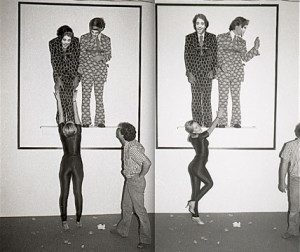
Bob & Bob, Sex is Stupid, 1978. Courtesy of Bob & Bob
Media:
Los Angeles Goes Live press release
Los Angeles Goes Live Info Sheet


